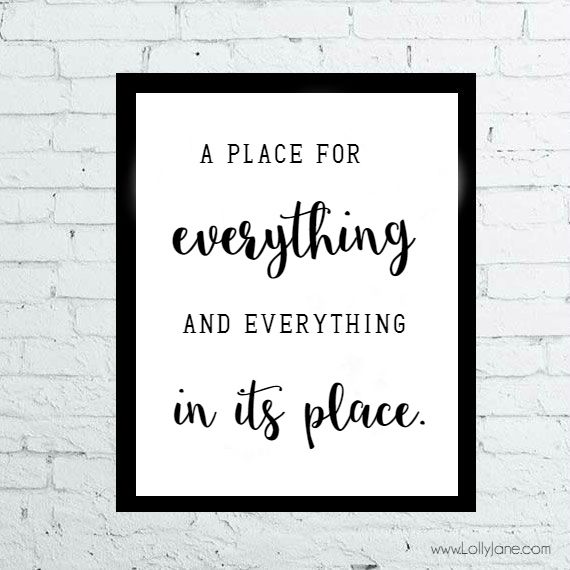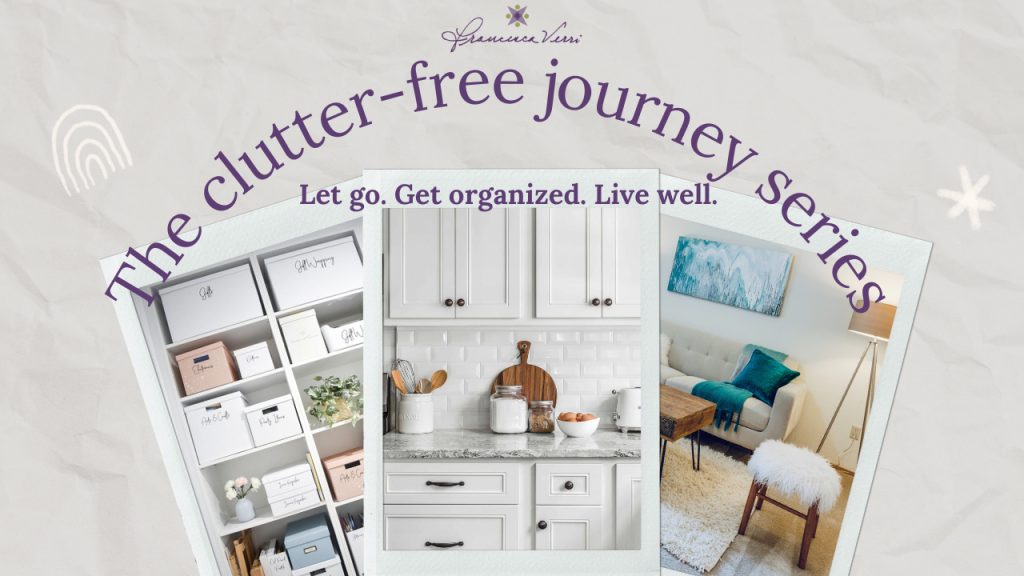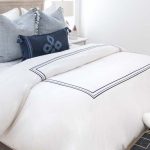Clutter. It is all the stuff you have that doesn’t have a home that is in the wrong spot. Often that wrong spot is on a counter, a table, a bed, or the floor. Those flat surfaces – and any other like them – are the perfect breeding ground for clutter.
Keeping those flat spaces clear of surface clutter doesn’t mean you have conquered your clutter. An overstuffed drawer or a bulging closet often means you are keeping more than you like, need, or use. But surface clutter can weigh on you differently. It is this visual clutter like junk mail or unfinished projects you maneuver around daily that contributes to feeling out of control in your space.
All clutter is heavy, perhaps even burdensome, but when it is consistently in sight it can more immediately cause overwhelm and stress. Clutter – as the definition states – on counters tends to be the ultimate in “a crowded or confused mass of collection”.
And that leaves your brain on a spin cycle trying to constantly discern what matters. It robs you of slowness and being able more easily to take your next best steps in living a healthy, fulfilled life you love.
Clutter leads to stress and overwhelm; it leads to always feeling like you must “catch up” and never feeling satisfied, on time, or prepared.
It is important to rid your space of surface clutter to create calm in your space, and propel you to perhaps do more purging. At the least, it will leave you wanting to stay clutter-free because you are less likely to clutter or to put things down instead of “away” when your flat surfaces are clear.
Three steps to getting rid of surface clutter for good.
Here are three actionable steps you can take to clear your surfaces of clutter.
1. Step one: Identify what is trash.
There are a few places to start when decluttering but I encourage my clients to start with the obvious. Trash is obvious. It is the stuff you can easily say no to when discerning whether an item belongs in your space or life. Trash is what is broken, torn, or too worn. It is a wrapper, an empty bottle, paper, or anything that has run its course.
To start, take 10 minutes and clear your space of trash. What is left will be more manageable.
2. Step two: Find a home for the “keep”.
Often what is important or necessary gets mixed up with the clutter — including the things you haven’t easily or quickly decided on that land on flat surfaces. Ideally, what is left once you sweep the space of what is trash is what you want or need to keep and it needs to be put away. What is necessary, or purposeful needs to be put away.
The most important organizational tenet is this: Everything must have a home. And the home is never a flat surface
Remembering this tenet and putting it into action is the best thing you can do to declutter and keep clutter at bay.
Simply put, when everything has a logical home that makes sense for the object, the area is tidy. And when tidy is present, clutter usually isn’t. When things are tidy you can find what you need when you need it – without stress and frustration. A home creates tidiness and contributes to feeling prepared, calm, and confident.
When clearing your surface clutter take 10 minutes to put things back where they belong.
3. Step three: Deal with the homeless.
When you are clearing your surface clutter you might run into homeless items. In my experience, these items fall into one of two categories. They are either emotionally heavy or they haven’t been properly housed.
Category one – Emotionally heavy:
One reason you clutter, or put things down for what is intended to be two minutes but ends up being two weeks is that you haven’t put in the energy to determine if it has a purpose in your life. And often you don’t put the energy into it because the item is emotionally charged – someone gave it to you, you spent money on it, and you feel guilt or shame in letting it go. So instead, you put it down. You tell yourself you’ll deal with it later.
But later equals clutter.
When something comes in, question its purpose or necessity. Make sure you like it, need it, and will use it. And then put it away.
Category two – Not properly housed:
Of course, putting it away isn’t about shoving it on a shelf or stuffing it in a drawer. Find or create the best home because a home that doesn’t feel good or is too stuffed won’t be used. And that is a precursor to the cycle of clutter.
To determine the home ask yourself a series of questions:
– Where do I use this?
– Where are other things like it stored?
– Does containing and storing this on a shelf or in a closet make it more accessible? Does hanging it in a closet or putting it in a drawer make more sense?
One note of caution: Beware of the home that is already too stuffed! If it is, it indicates that either the home is housing clutter or it needs to be broken up into smaller categories so you can more clearly see the contents. In either case, it is best to declutter and reorganize your categories.
Remember, if the home feels good, you’ll use it!
When you put something down on a flat surface, without determining and putting said item in the logical home clutter builds. If you want to give yourself a great jump start in being clutter-free and reaping the many benefits start with your flat surfaces.
When you rid yourself of surface clutter you literally and figuratively create space for endless healthy living opportunities.
_______
Want to be clutter-free? Here are your first three steps! 👇🏼
___________
Watch and learn more! 👇🏼






